引出
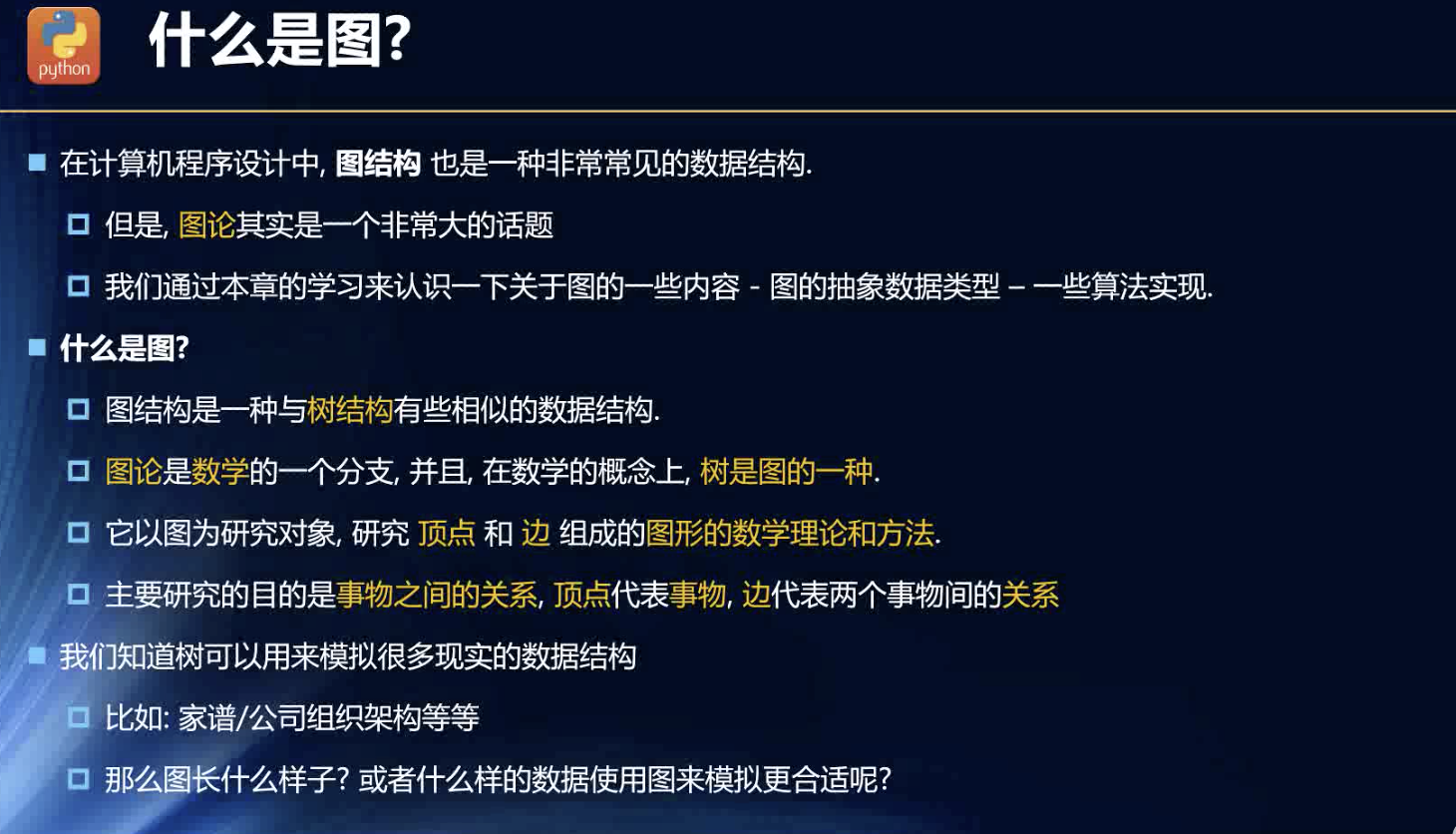
研究事物之间的关系,通过点与线具现化的感觉。抽象的关系,实体表现出来!
示例
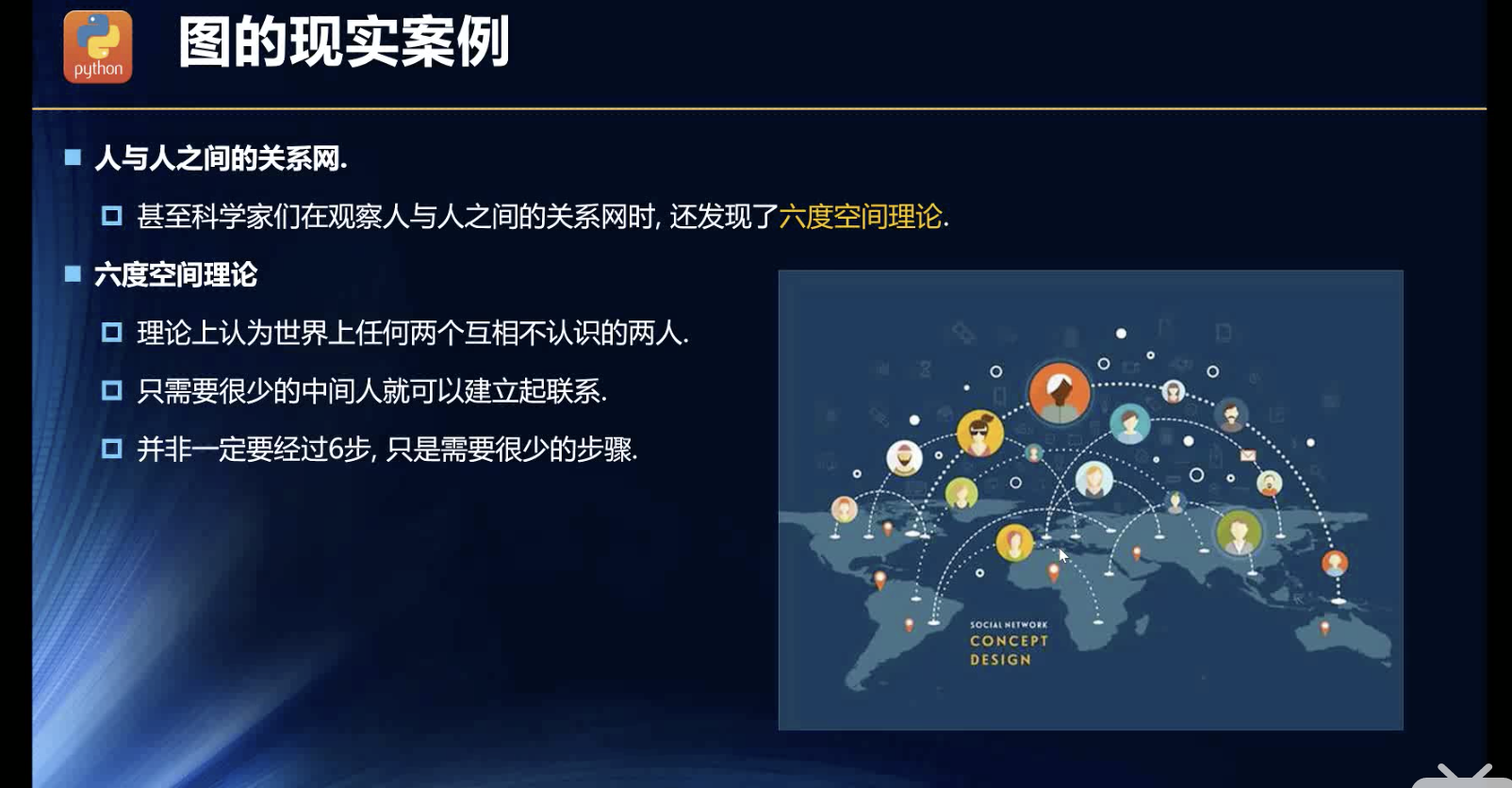
人与人之间的联系性!
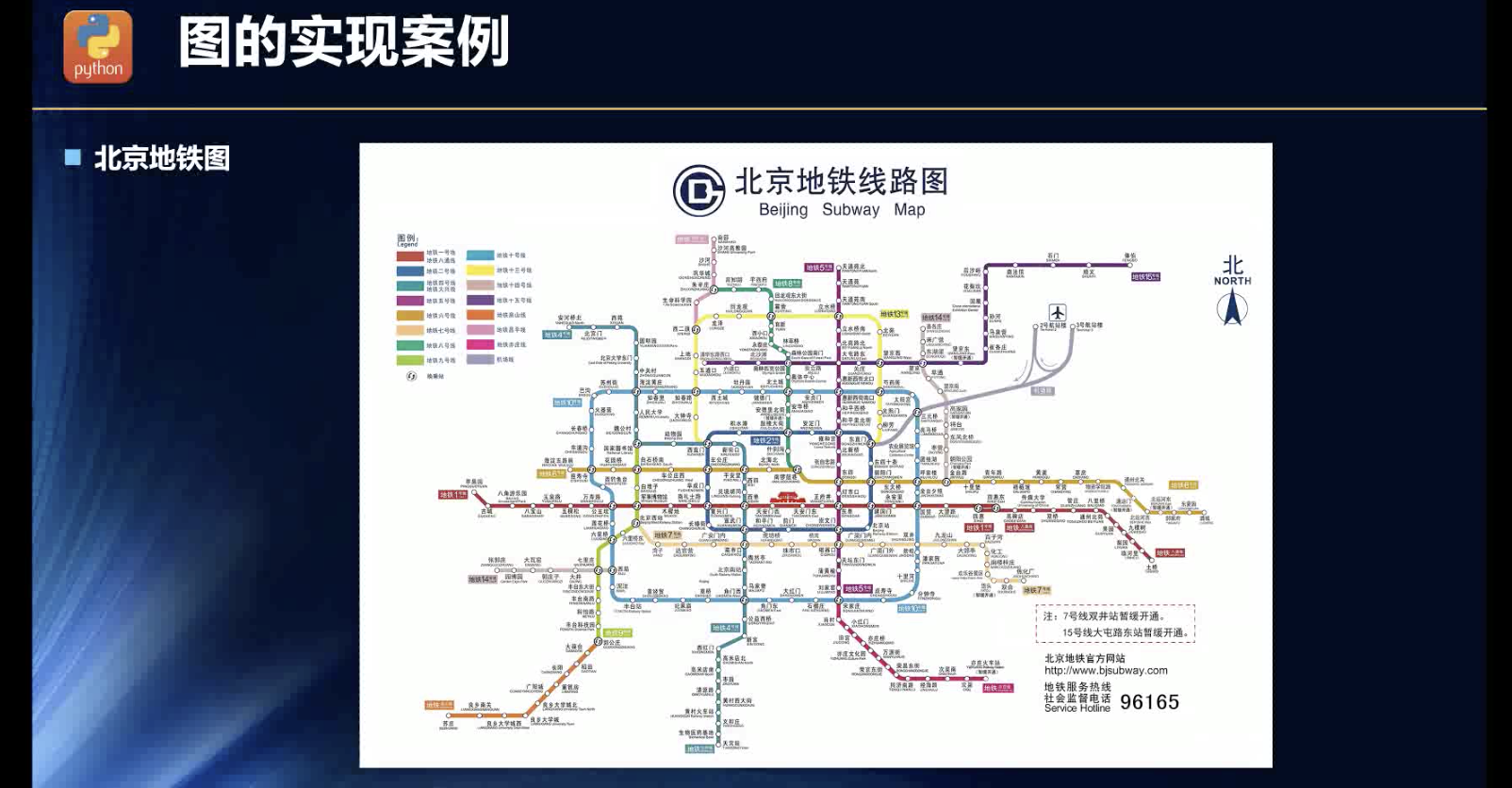
交通网络图,节点与节点之间的联系!
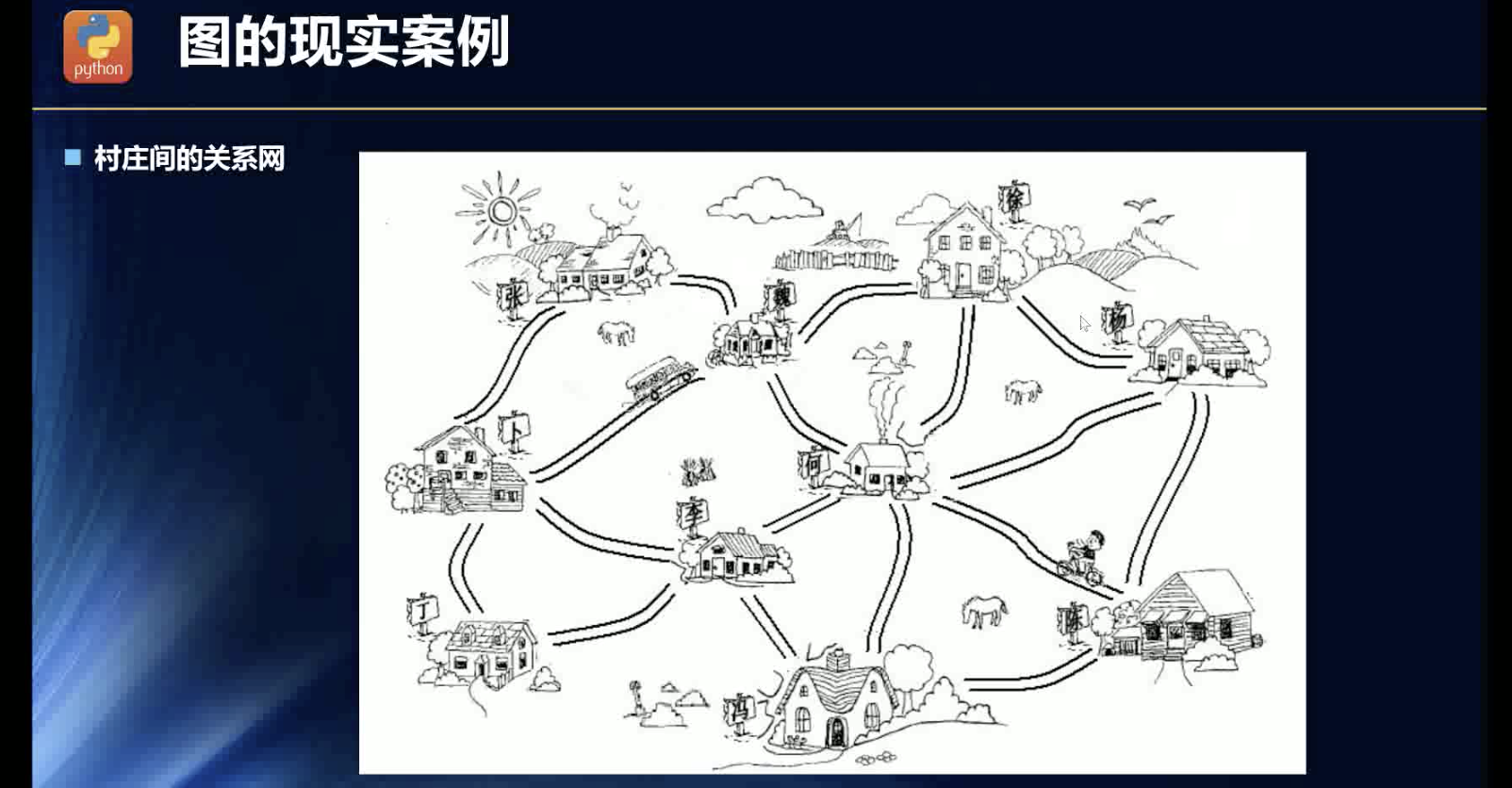
图结构的概念
图结构:顶点,连线!二叉树太讲究顺序,两个点之间有因果关系,主副。图结构更大的范畴了,图的顶点互相之间独立存在的!
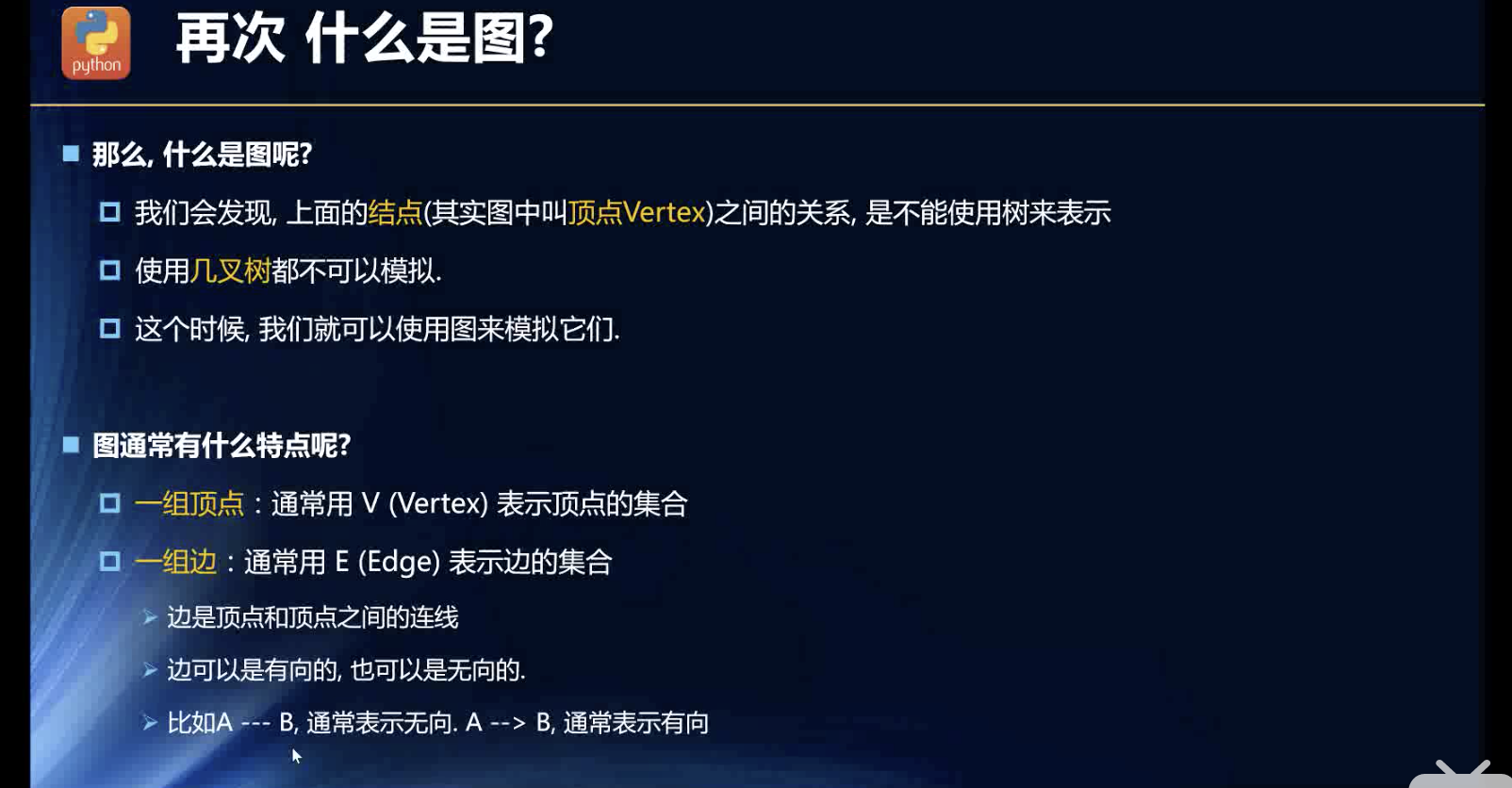
七桥问题
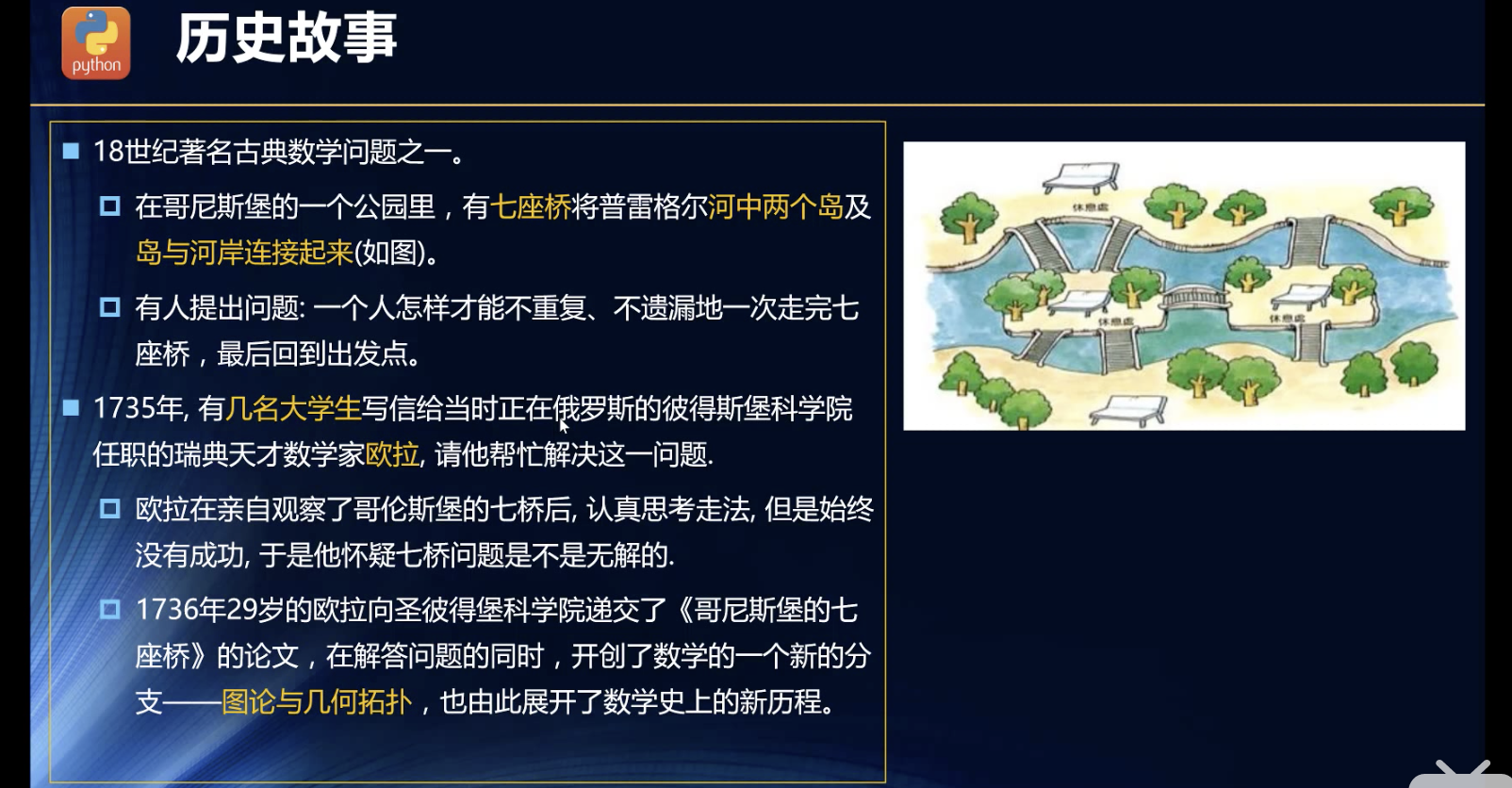
图论的由来。
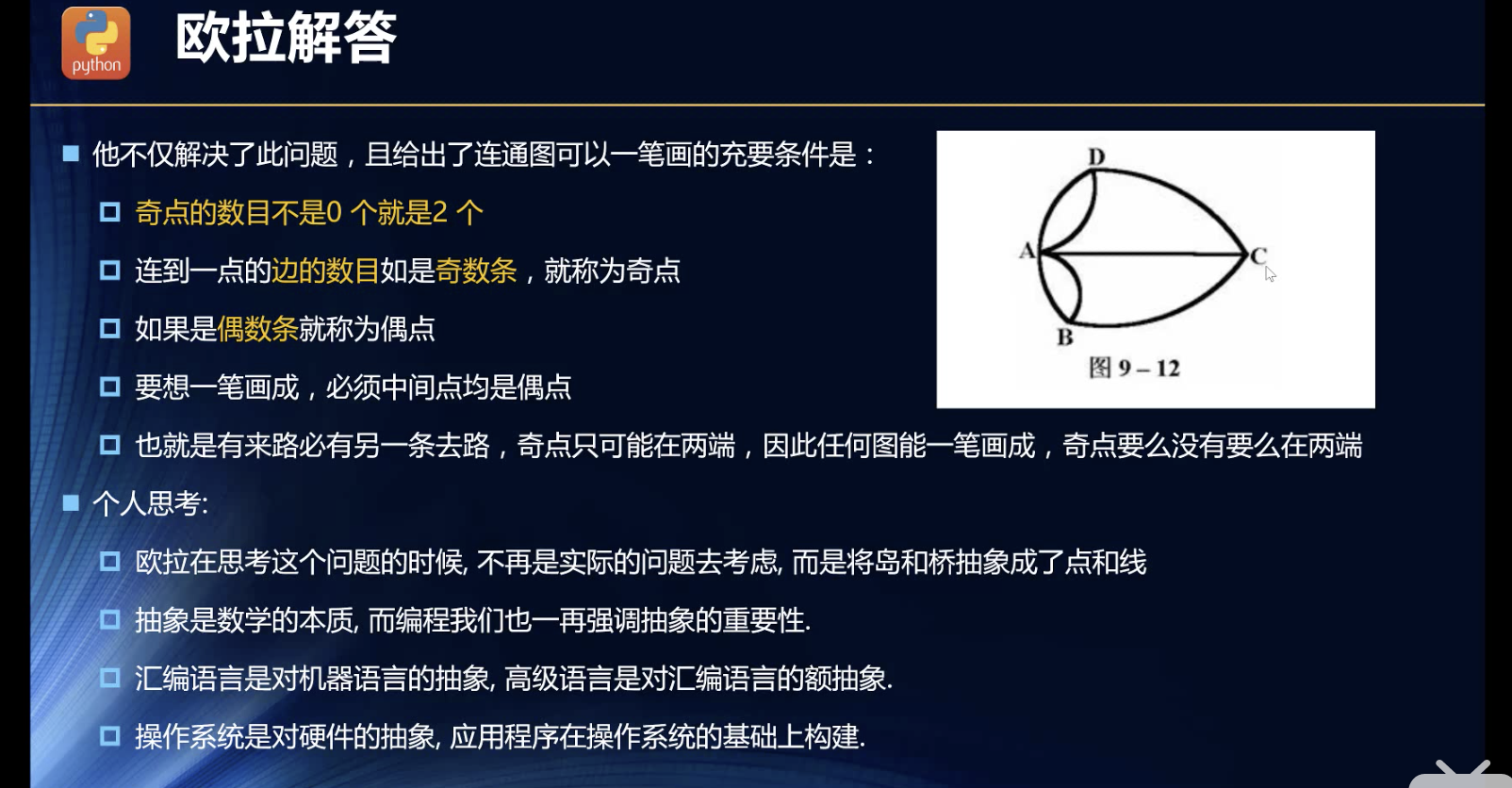
老师对抽象的理解也是可以的,这两天做递归算法的时候,就觉得把现实问题抽象转化是为了想要用数学知识简化问题 的。同样的还有一种逆向,就是把抽象的一些逻辑简单具象化,也比较重要的。尤其是算法题目的意思有木有明白彻底!
术语
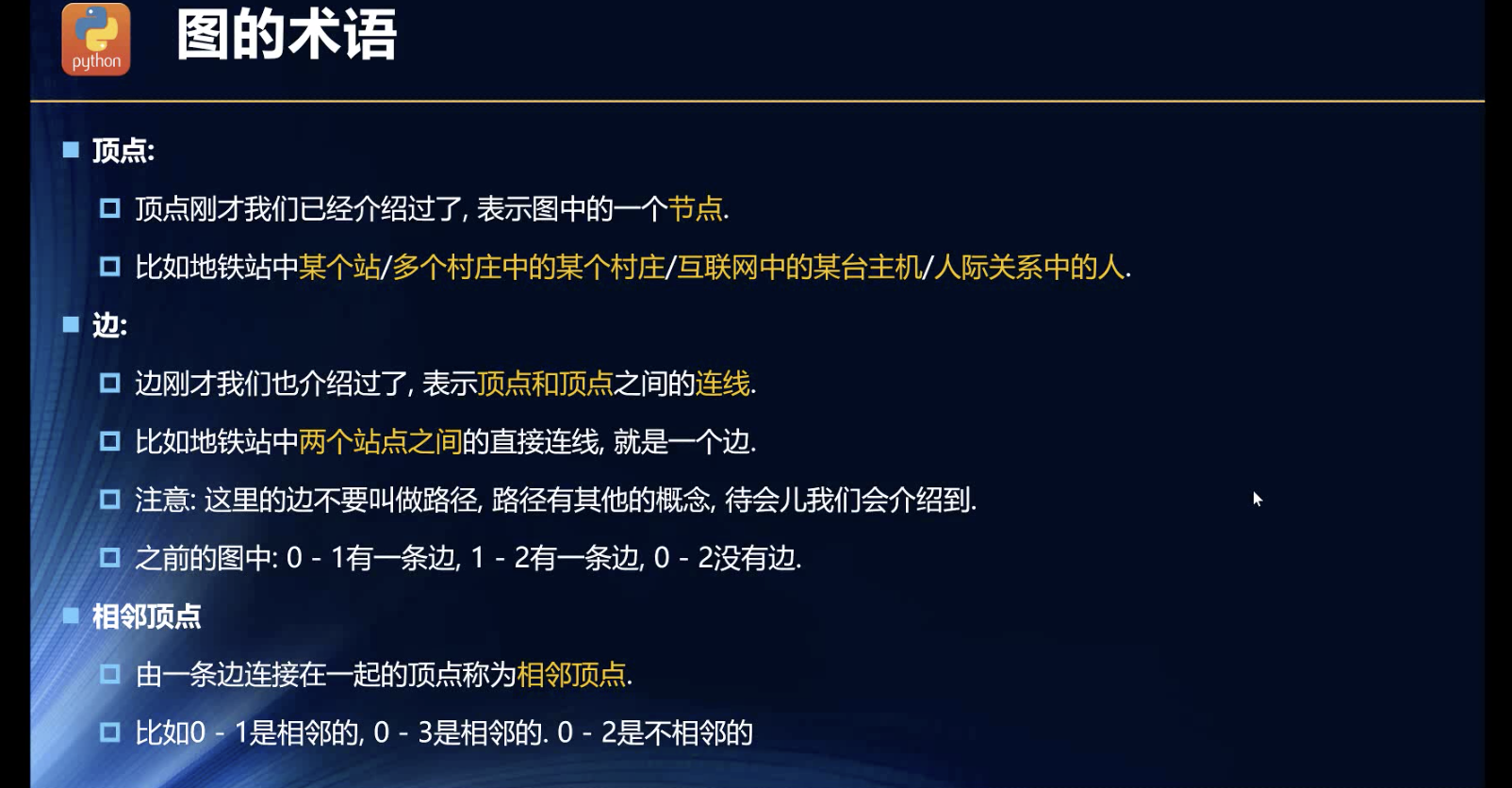
点与边!
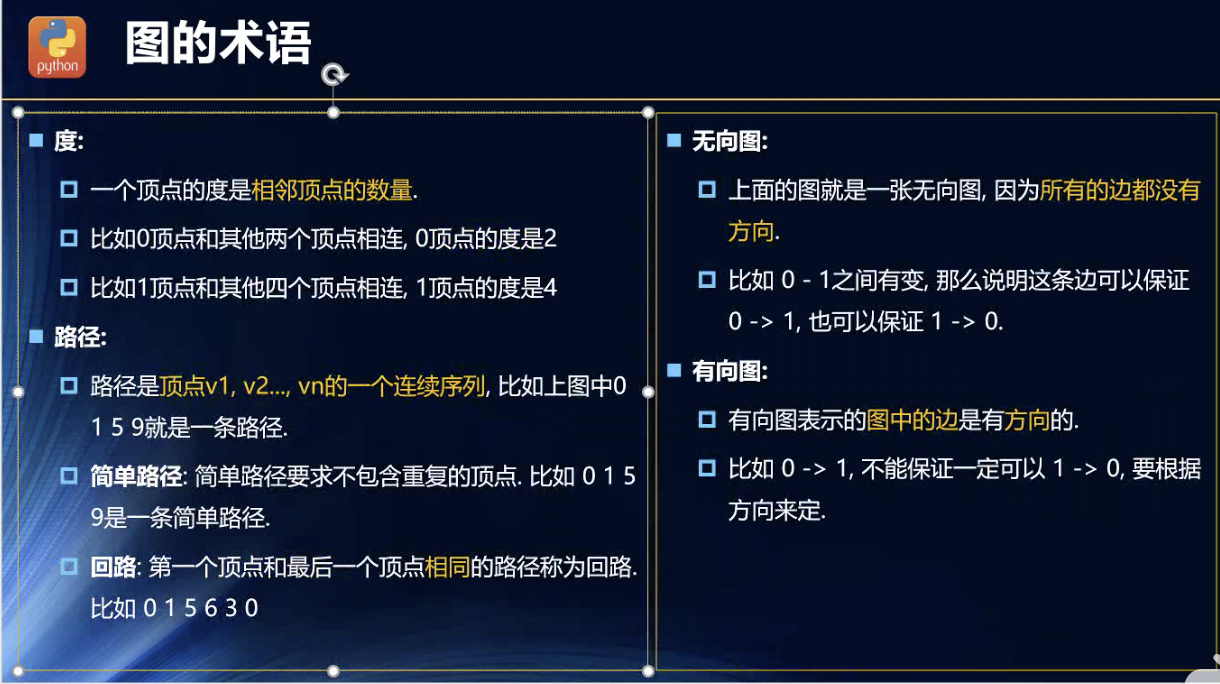
边的意义!路径概念!增加属性!
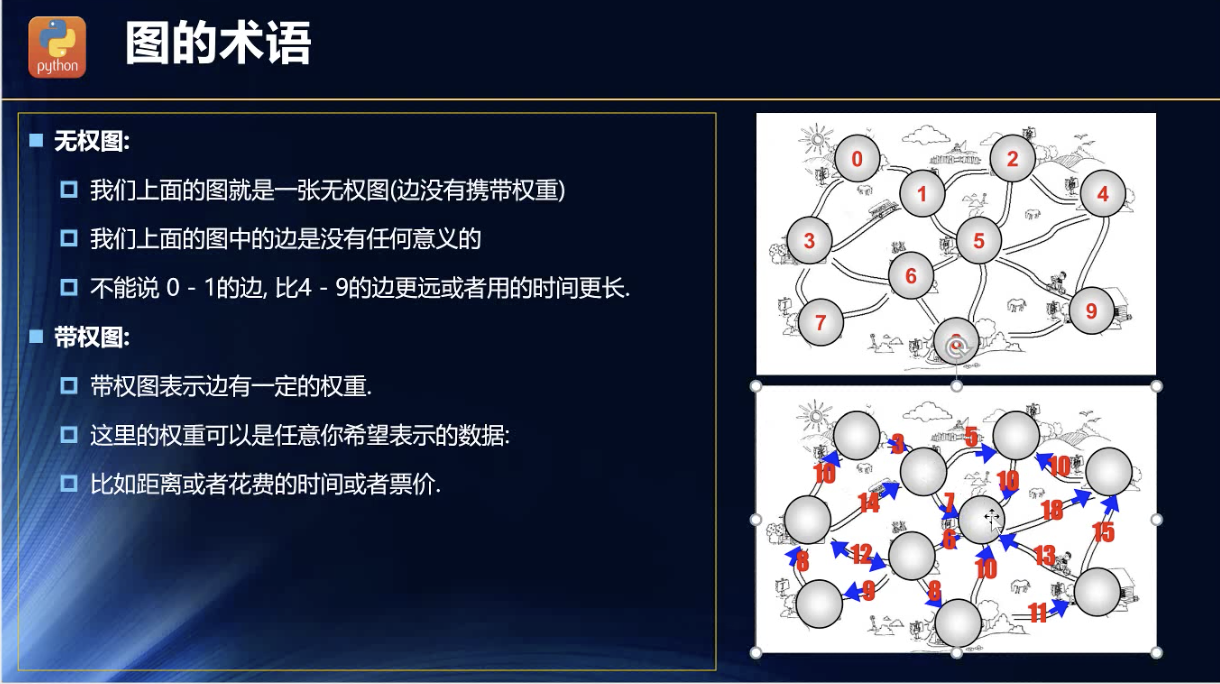
加属性:权重!
图的表示
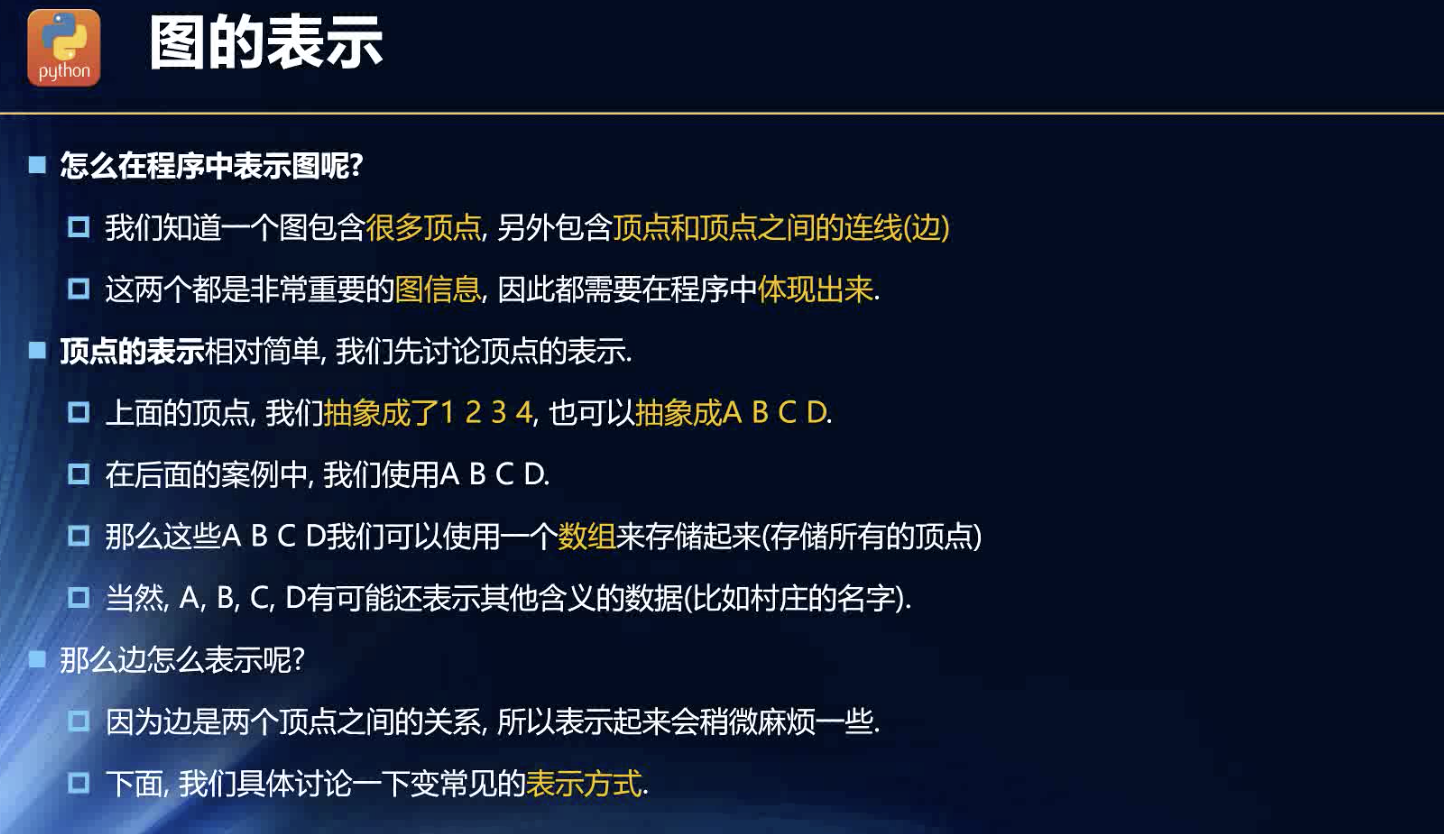
上面说过图跟树的关系,树属于图,但是树太片面了,规则局限很明显的,有因果:父子关系。而图的每个顶点默认的都是相互独立的,不讲究插入顺序而导致的节点之间的关系发生变化的。
所以,各个顶点是相互独立的,就适合用数组来存储了!
邻接矩阵
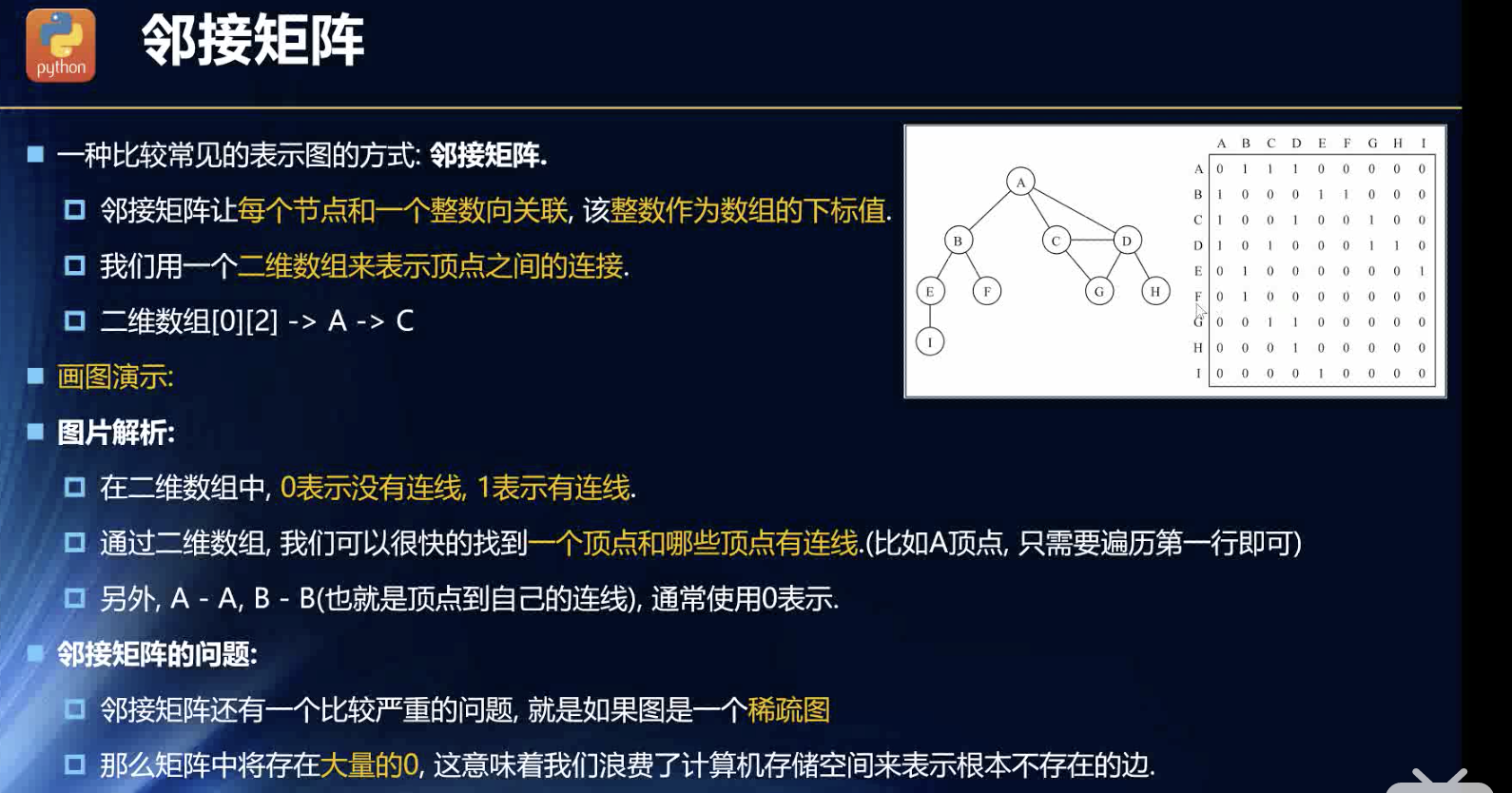
看着挺眼熟的,其实就是关系型数据库里的主键表与副键表的模拟了!
二维数组是个知识点的,而且存储的数值,可提前约定好,数值也可以多用,指代权重等。
缺点就是多个点的简单的路径关系,会浪费内存空间,我觉得适合成熟的网型现象!
邻接表
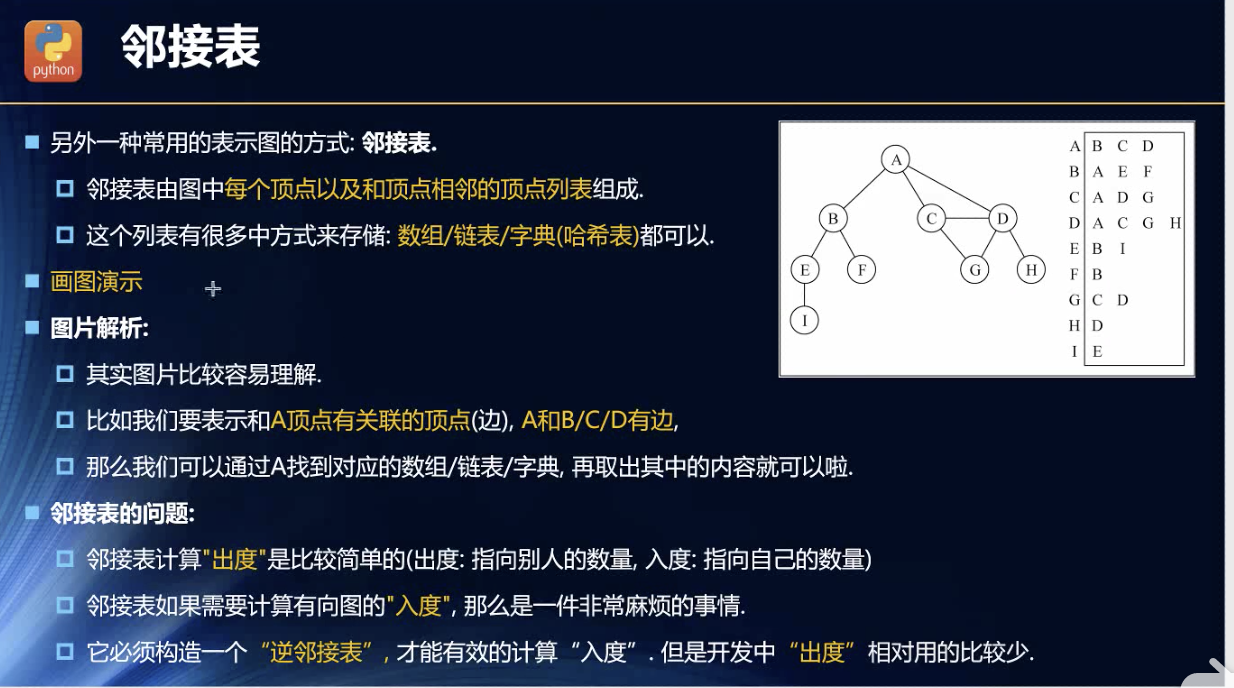
ppt有错误! 是入度用的少!所以,邻接表比较常用!
其实很像哈希表的数组形式存储重复数据的结构!这里其实就是个字典。主键是key,对应一个表数据。
封装
//图封装:邻接表const {Queue1} = require("./queue");const {Dictionary} = require("./dictionary");class Graph {constructor(vertexes = []) {this.vertexes = vertexes;let obj = {}, obj1 = {};if (vertexes.length) {vertexes.map(key => (obj[key] = []) && (obj1[key] = 1));}this.edges = new Dictionary(obj);this.vertexState = obj1;this.queue = new Queue1();}hasVertex(v) {return this.vertexes.indexOf(v) >= 0;}addVertex(v) {if (!this.hasVertex(v)) return false;this.vertexes.push(v);this.edges[v] = [];this.vertexState[v] = 1;return true;}addEdge(v, v1, unidirectional) {if (!this.hasVertex(v) || !this.hasVertex(v1)) return false;const edges1 = this.edges.get(v), edges2 = this.edges.get(v1);if (edges1.indexOf(v1) < 0) {edges1.push(v1);}if (!unidirectional && edges2.indexOf(v) < 0) {edges2.push(v);}// console.log(edges2,edges1);return true;}bfs(start, callback) {callback && callback(start);this.vertexState[start] = 2;this.queue.enqueue(start);this._bfs(start, callback);this.initStates();}initStates() {Object.keys(this.vertexState).map(k => this.vertexState[k] = 1);}_bfs(start, callback) {//1代表未被访问,2代表访问所有的关联未完成,3代表所有的关联都访问完了//callback && callback(start)//this.vertexState[start] = 2// console.log(999,start);const edges = this.edges.get(start);edges.map((key, ind) => {if (this.vertexState[key] === 1) {callback && callback(key);this.vertexState[key] = 2;this.queue.enqueue(key);}});this.vertexState[start] = 3;this.queue.dequeue(start);// console.log(this.queue,this.vertexState,999);while (this.queue.size()) {this._bfs(this.queue.front().data, callback);}}dfs(start, callback) {this.stack = [];this._dfs(start, callback);this.stack = null;this.initStates();}_dfs(start, callback) {const {stack} = this;if (this.vertexState[start] === 1) {// console.log("ccc");callback && callback(start);this.vertexState[start] = 2;stack.push(start);}const edges = this.edges.get(start);// console.log(edges,'ee',start);const next = edges.length && edges.find(k => this.vertexState[k] === 1);// console.log(stack,'s',next);if (next) {this._dfs(next, callback);} else {this.vertexState[start] = 3;stack.pop();if (stack.length) {this._dfs(stack[stack.length - 1], callback);}}}toString() {return this.vertexes.reduce((a, b) =>a + (a ? "\n" : "") + `${b} -> ${this.edges.get(b).join(" ")}`, "");}}const graph = new Graph(["a", "b", "c", "d", "e", "f", "g", "h", "i"]);graph.addEdge("a", "b");graph.addEdge("a", "c");graph.addEdge("a", "d");graph.addEdge("c", "d");graph.addEdge("c", "g");graph.addEdge("d", "g");graph.addEdge("d", "h");graph.addEdge("b", "e");graph.addEdge("b", "f");graph.addEdge("e", "i");graph.bfs("a", v => console.log(v));console.log(9);graph.dfs("a", v => console.log(v));// console.log(graph);
图的遍历:广度优先、深度优先
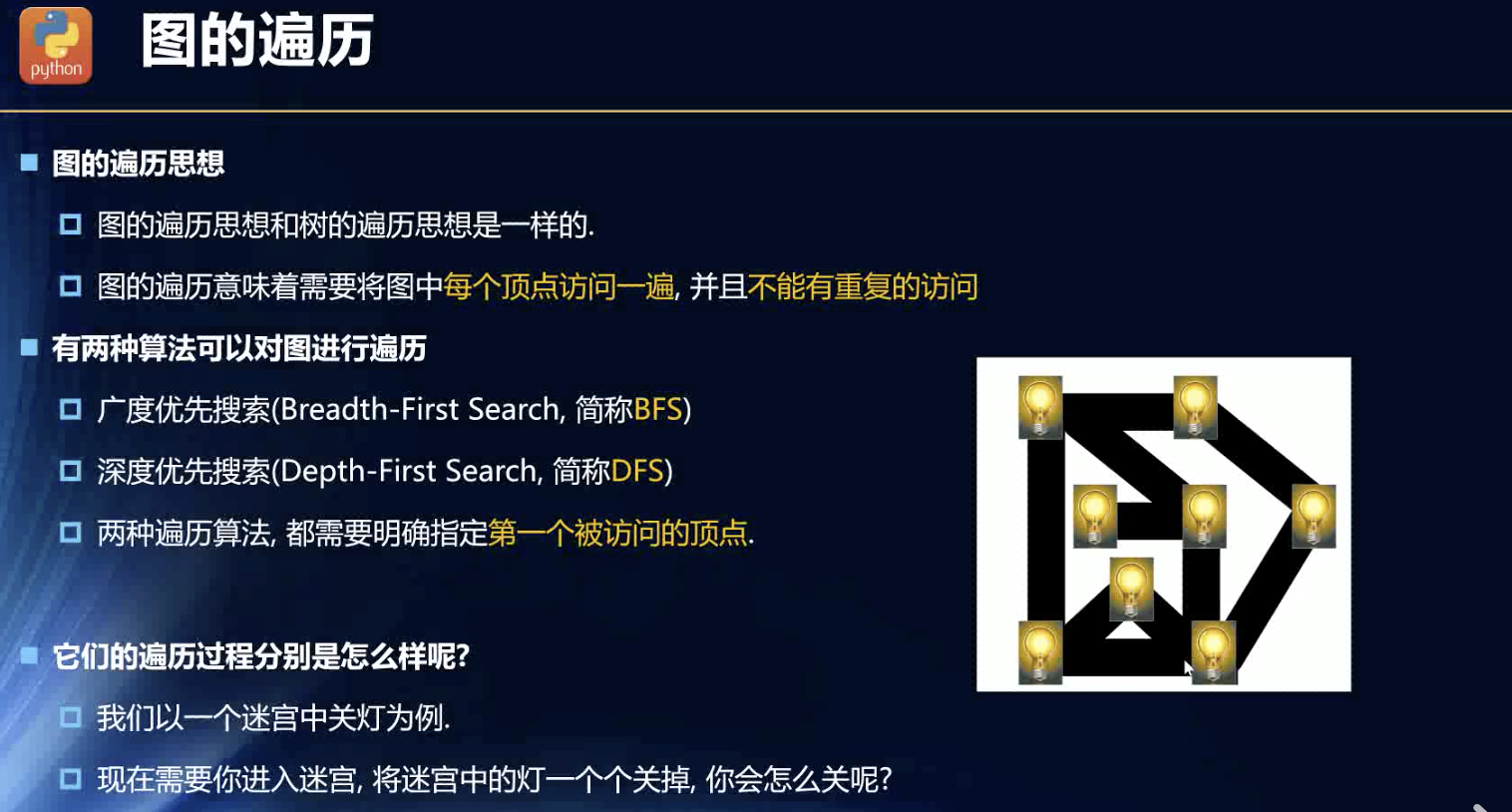
演绎法得出的,其实广度优先比较硬解题的意思了,按层级遍历的,不重不漏很容易的。
而深度优先的算法,比较注意细节了,倾向于走到一条路的头之后再往回走到之前的节点,看看有木有岔路,有岔路就进去走到头,再回来,回去的路上遇到岔路就进去,如此重复,就是递归了。
状态管理
这里会有疑惑,节点需要区分,访问过没访问过,分支访问探索完了?这里就有了状态意识了!
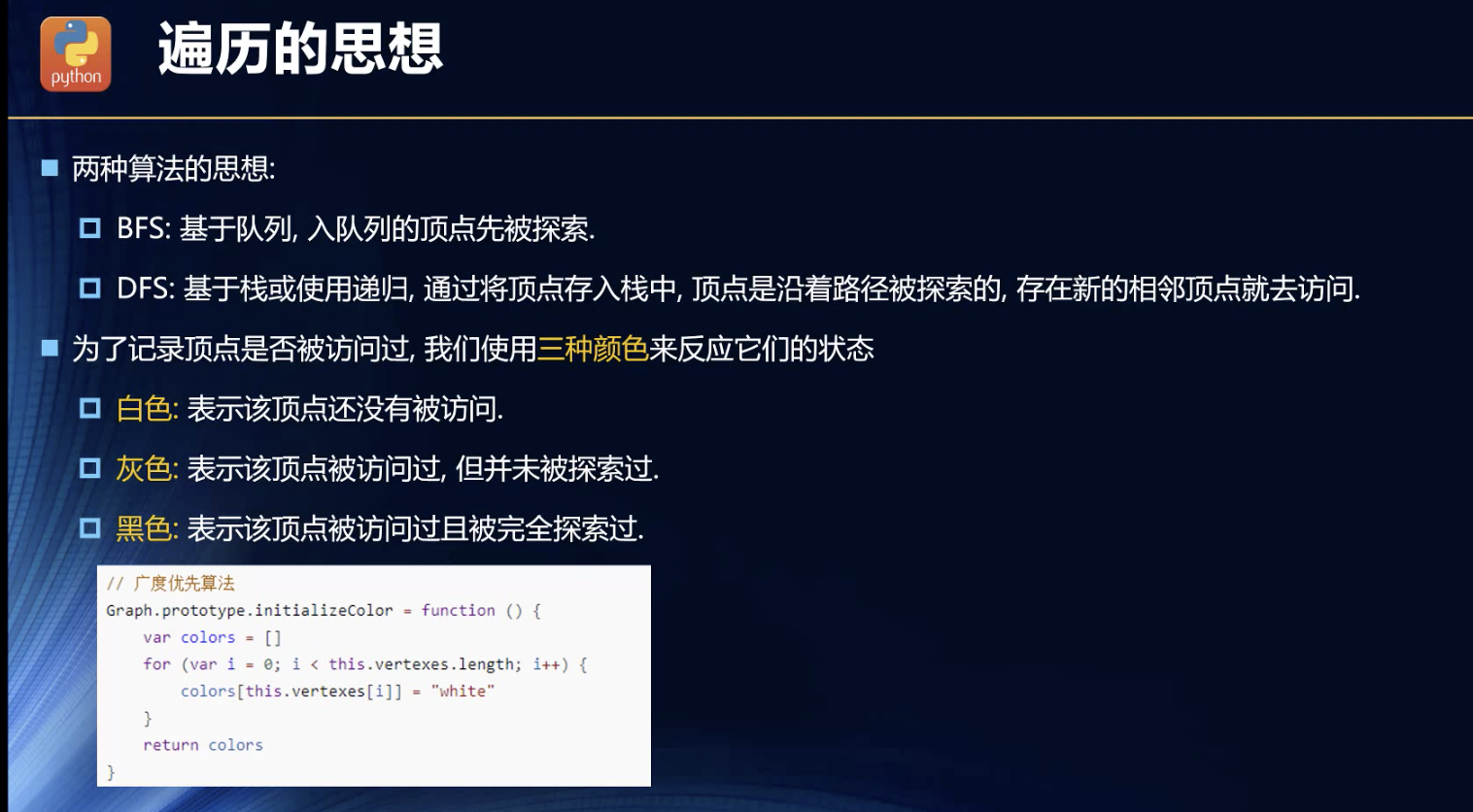
广度优先搜索
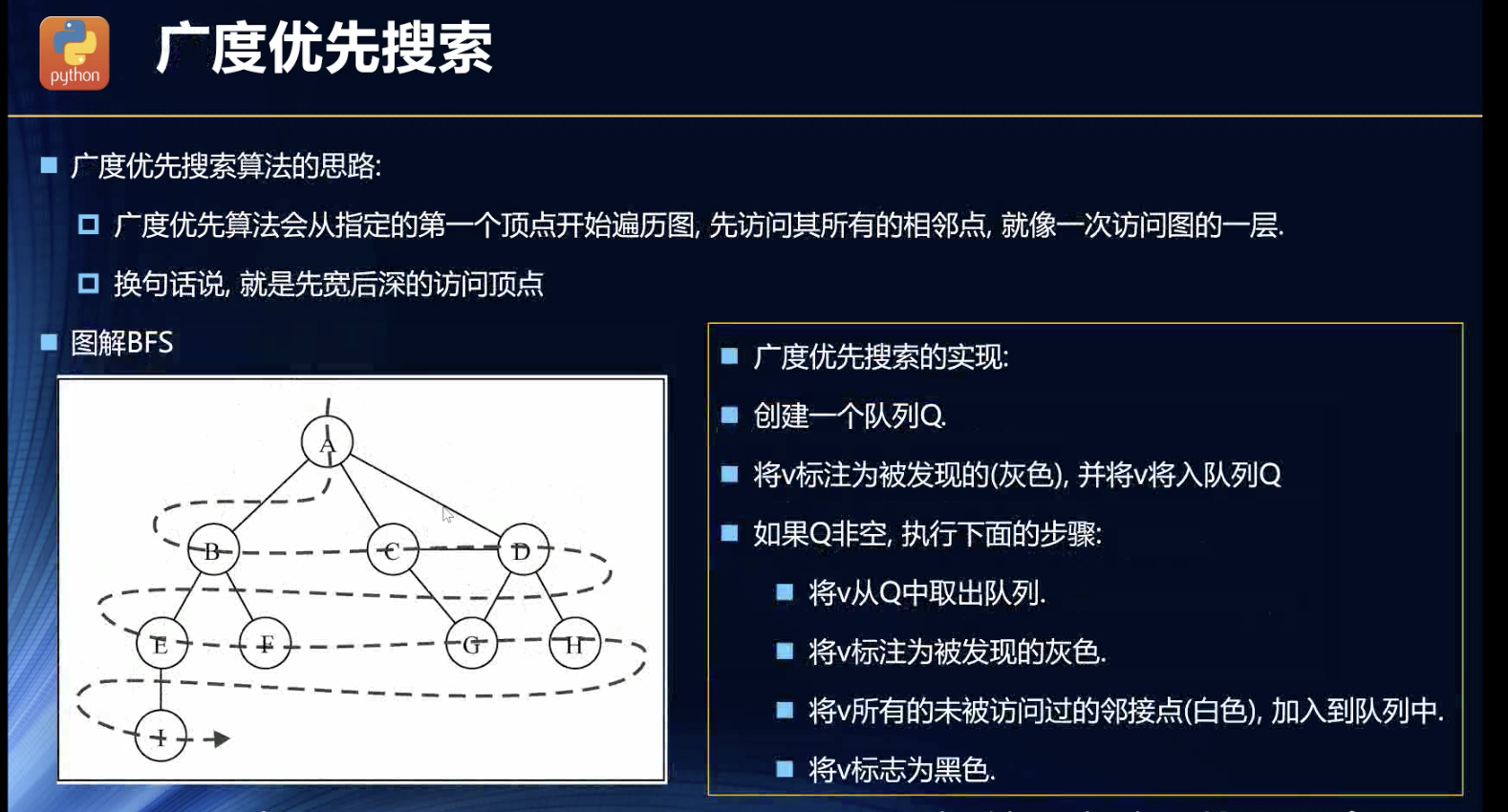
我一开始自己做的时候,没用队列。通过筛选出来所有的顶点的state为2的,遍历它们,进行后续。每一层的变量,多一次筛选。虽然做出来了,但是确实是队列比较好的。
我尝试不用队列,每层的遍历添加了一个数组来存储产生的state为2的顶点。但是失败了!我反复思考,发现是这个问题的:
bfs(start,callback){callback && callback(start)//1代表未被访问,2代表访问所有的关联未完成,3代表所有的关联都访问完了this.vertexState[start] = 2this.queue = [start] //这里存储this._bfs(start,callback)Object.keys(this.vertexState).map(k=>this.vertexState[k]=1)}_bfs(start,callback){//callback && callback(start)//this.vertexState[start] = 2// console.log(999,start);const edges = this.edges.get(start)edges.map((key,ind)=>{if (this.vertexState[key] === 1){callback && callback(key)this.vertexState[key] = 2 //修改状态this.queue.push(key) //添加新的2状态的点,这里有问题}})this.vertexState[start] = 3 //完结了,把start的顶点标为完成this.queue.shift() //删除完成的点// console.log(this.queue,this.vertexState,999);//这里我用的是遍历:这里也错了,其实可以用while循环,强制一个执行完了再执行,//而不是map循环,无法控制。因为假如现在正在循环第二层的b,执行到上面的 this.queue.push(i),//this.queue.map的表现是,动态的,直接把i也放入跟b同一层进行遍历了,而不是下一层。this.queue.map(k=>{this._bfs(k,callback)})}
不过,我后来,自己重新改了一下原本用数组做出来的队列的封装,我思量到底是用双链表还是单链表做?选了双链表。然后用了实在的队列进行解题,发现效果是真的好的不得了!
//1代表未被访问,2代表访问所有的关联未完成,3代表所有的关联都访问完了
bfs(start,callback){
callback && callback(start)
this.vertexState[start] = 2
this.queue.enqueue(start) //这是双链表实现的队列,暂时没有优先队列这一特点。
this._bfs(start,callback)
Object.keys(this.vertexState).map(
k=>this.vertexState[k]=1
)
}
_bfs(start,callback){
//callback && callback(start)
//this.vertexState[start] = 2
// console.log(999,start);
const edges = this.edges.get(start)
edges.map(
(key,ind)=>{
if (this.vertexState[key] === 1){
callback && callback(key)
this.vertexState[key] = 2
this.queue.enqueue(key)
}
}
)
this.vertexState[start] = 3
this.queue.dequeue(start)
// console.log(this.queue,this.vertexState,999);
while (this.queue.size()){
this._bfs(this.queue.front().data,callback)
}
}
深度优先搜索
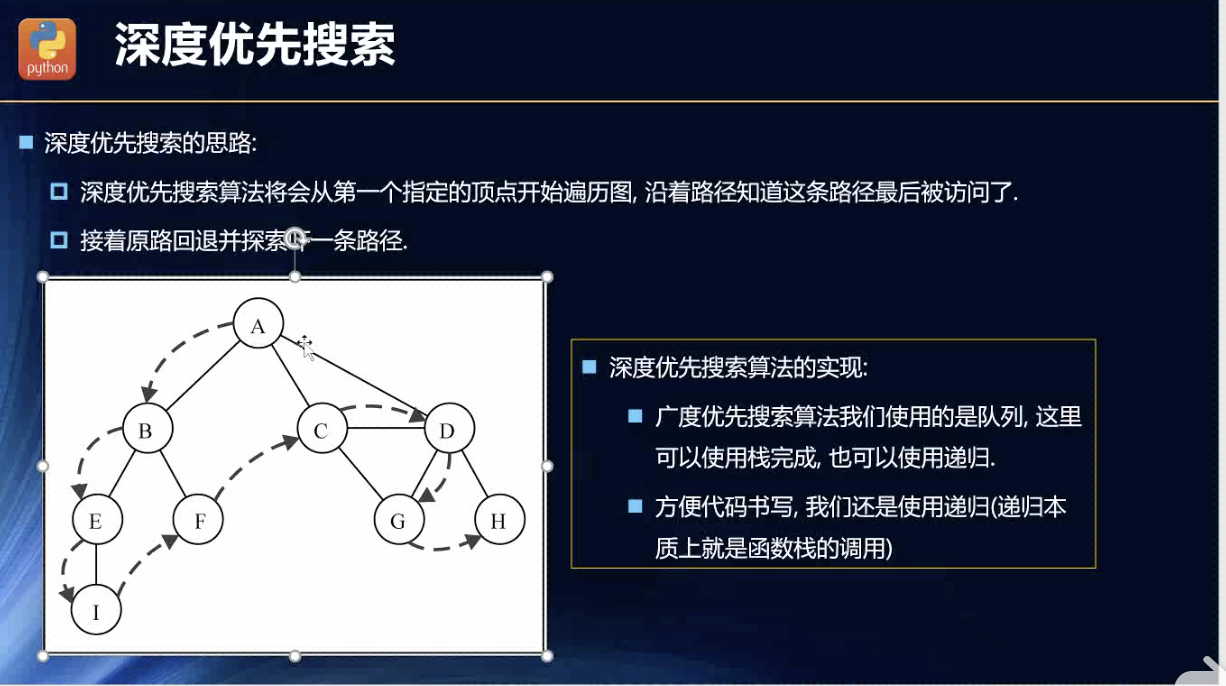
深度优先算法,我演绎了一下,发现很适合用栈的逻辑去应对的。木有看老师的视频,然后完全模拟了栈的思路:
这样完全模拟,在我看到老师的写法之后,发现自己变笨了!
先看:
dfs(start, callback) {
this.stack = []; //栈
this._dfs(start, callback);
this.stack = null;
this.initStates();
}
_dfs(start, callback) {
const {stack} = this;
if (this.vertexState[start] === 1) {
// console.log("ccc");
callback && callback(start);
this.vertexState[start] = 2;
stack.push(start); //入栈
}
const edges = this.edges.get(start);
// console.log(edges,'ee',start);
const next = edges.length && edges
.find(k => this.vertexState[k] === 1);
// console.log(stack,'s',next);
if (next) {
this._dfs(next, callback); //重复
} else {
this.vertexState[start] = 3;
stack.pop(); //到栈顶了,出栈
if (stack.length) {
this._dfs(stack[stack.length - 1], callback); //新的重复
}
}
}
而老师的栈的思想,其实就是遍历中递归,很简单的套路!
dfs1(start, callback) {
if (this.vertexState[start] === 1) {
callback && callback(start);
this.vertexState[start] = 2;
}
this.edges.get(start).map(
k => {
if (this.vertexState[k] === 1) {
this.dfs1(k, callback);
}
}
);
this.initStates();
}
又对栈加深了印象了!今天的队列和栈真的是帮大忙了!

